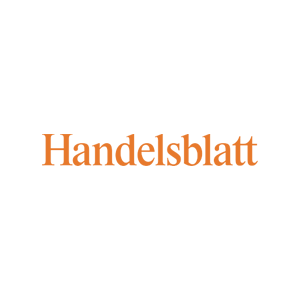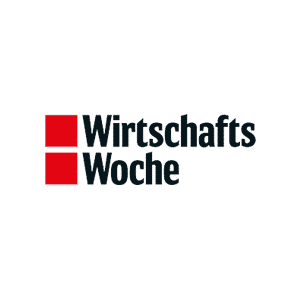In April 2022, the Port of Antwerp reached a milestone: the merger with the Port of Zeebrugge. This merger has fundamentally transformed the maritime landscape of Western Europe and further strengthened the potential of both locations. Together, they now form the Port of Antwerp-Bruges, which has set the ambitious goal of becoming one of the most sustainable ports in the world.
In the first quarter of 2024, the Port of Antwerp-Bruges recorded a total cargo volume of 70.4 million tons, representing an increase of 2.4% compared to the same period the previous year. Particularly noteworthy was the growth in container handling, which rose by 8.6% in tonnage and 6% (3,287,000 TEU) in twenty-foot equivalent units.
For comparison: the Port of Rotterdam, the largest port in Europe, handled around 220 million tons in the same period, while the Port of Hamburg, another significant European port, handled 19 million tons.
Leveraging synergies: The strengths of both locations
The two ports complement each other perfectly with their different specializations. Antwerp, located on the Scheldt River, is a leading location for container handling as well as the handling of liquid goods, particularly basic chemicals. This specialization is closely linked to Europe’s largest chemical cluster in the port area, where major companies such as BASF, Bayer, and Henkel are based.
Zeebrugge, on the other hand, is located 100 km from Antwerp and lies directly on the North Sea coast. This port is a leader in handling cruise ships and RoRo ferries. Additionally, Zeebrugge is associated with a significant volume of liquefied natural gas and is involved in major hydrogen plant projects.
Growth despite Brexit and economic uncertainties
Despite economic uncertainties and Brexit, the Port of Zeebrugge has traditionally handled the bulk of RoRo traffic with British ports. Despite the uncertainties associated with Brexit and the COVID-19 pandemic, the port not only managed to maintain its cargo volume but even expanded it. As many truck drivers avoid traveling through the UK, direct traffic with Ireland has significantly increased.
Pioneering technologies for a greener future
The Port of Antwerp-Bruges is using cutting-edge technologies to increase its efficiency and achieve its sustainability goals:
- Smart Cameras: The Port of Antwerp is monitored around the clock by 460 intelligent cameras. Thanks to artificial intelligence, these cameras can recognize objects such as ships and assist port management in incident and berth management. The footage can also be shared with security services.
- Smart Sensors: The port uses a variety of sensors to remotely control operations and increase port automation. Sensors monitor the water quality in the docks and extend the lifespan of asphalt. 3D sonar sensors also enable the autonomous navigation of ships, while so-called iNoses detect harmful gases in the port.
- Open Innovation Platform: The port serves as an open platform for research and development. Through collaboration with startups, scale-ups, accelerators, investment funds, government, and knowledge institutions, the port is creating a strong ecosystem that supports and accelerates innovation. The port is used as a testing ground where ideas and projects can be safely tested in a real industrial environment.
- Hydrotug 1 – the first hydrogen-powered tugboat: In collaboration with CMB.TECH, the Port of Antwerp-Bruges developed the world’s first hydrogen-powered tugboat, the Hydrotug 1. This innovative boat is equipped with two dual-fuel BeHydro engines that can run on both hydrogen and traditional fuel. The Hydrotug 1 is an integral part of the port’s green fleet program and a significant step toward a climate-neutral port by 2050.
Sustainability strategies: On the way to a climate-neutral port
Sustainability is at the core of the strategy of the Port of Antwerp-Bruges, which has set the goal of becoming climate-neutral by 2050:
- Renewable Energy: The port is investing heavily in renewable energy sources such as wind and solar power. At the Antwerp Euroterminal (AET), LED lighting, solar panels, and rainwater harvesting are used to reduce energy consumption. Through the EU-funded PIONEERS project, the port is also utilizing battery storage to ensure a stable and sustainable energy supply.
- Integration of sustainability into operations: Sustainability is a central part of the corporate strategy of the port. This includes measures to improve air, water, and soil quality in the port area, as well as initiatives to promote the circular economy and environmental protection. The port monitors air quality using a network of sensors, called iNoses, and implements actions to remediate soil and groundwater contamination. Innovative treatment techniques for pollutants such as PFAS are also being employed to further minimize environmental impact.
- Innovative projects and technologies: The port is focusing on innovative technologies such as carbon capture and utilization (CCU), the development of hydrogen infrastructure, and the promotion of shore power for ships to reduce environmental impact and support the transition to a green economy.
Road transport as the backbone of distribution
The road connections of the Port of Antwerp-Bruges are excellent, making it particularly attractive for the distribution of goods to Central Europe. With direct highway connections, trucks from Antwerp can reach key economic centers in Germany, France, and the Benelux countries within a few hours. This geographical proximity and well-developed infrastructure allow for fast and flexible transportation of goods, which is especially valuable in dynamic logistics environments.
Efficiency and flexibility through road transport
Road freight offers significant advantages for companies using the Port of Antwerp-Bruges. It ensures smooth pre-haulage and post-haulage by providing direct transport from the production site or final destination to and from the port. This is particularly relevant for e-commerce providers and companies operating just-in-time logistics.
Saloodo! – An intelligent solution for the Port of Antwerp-Bruges
Closely linked to port logistics is Saloodo! as an ideal solution to optimize pre- and post-haulage. As a carrier management portal for DHL, the platform provides an efficient and flexible way to organize road transport, seamlessly integrating with complex supply chains. As a carrier or freight forwarder, you benefit from exclusive access to DHL’s transport orders.









